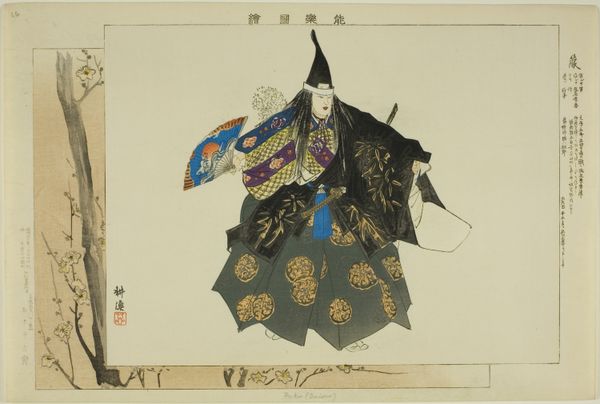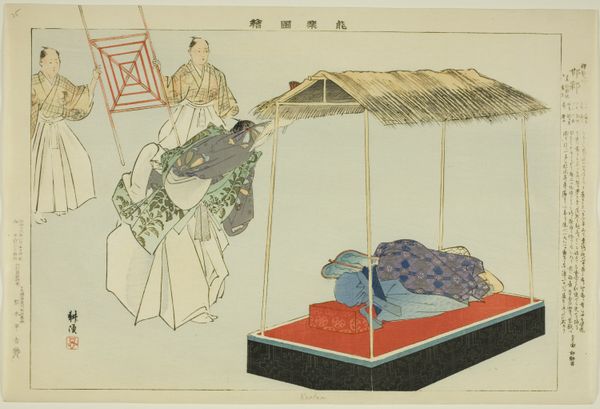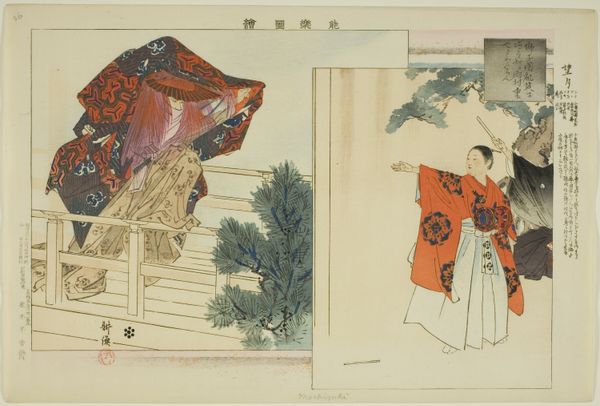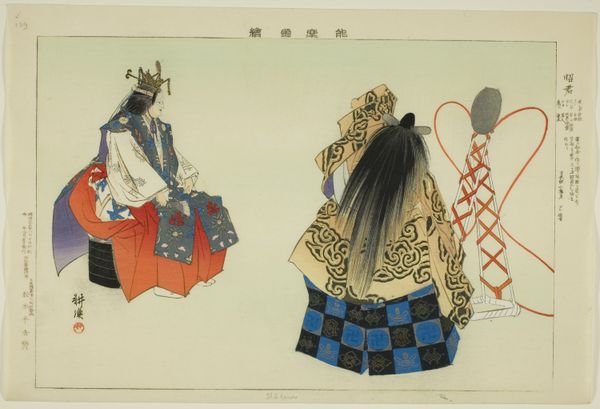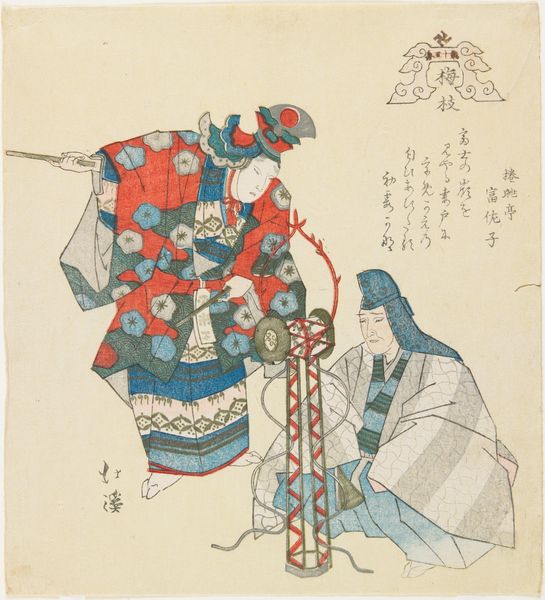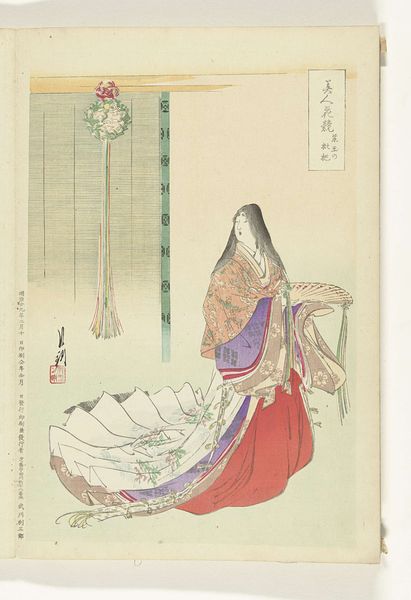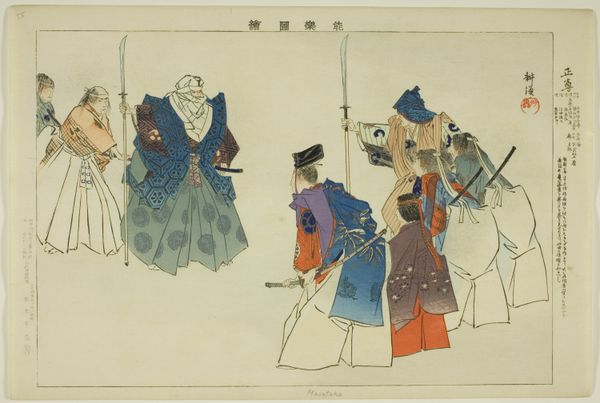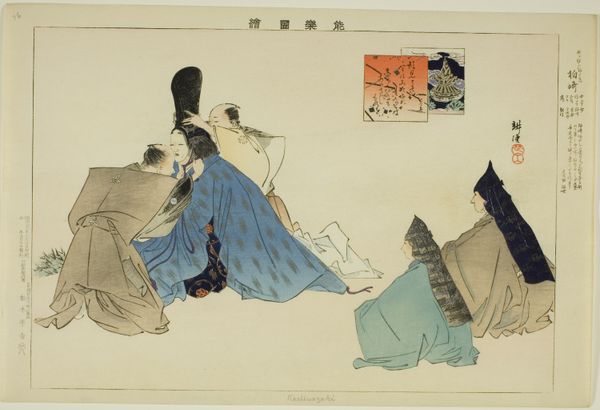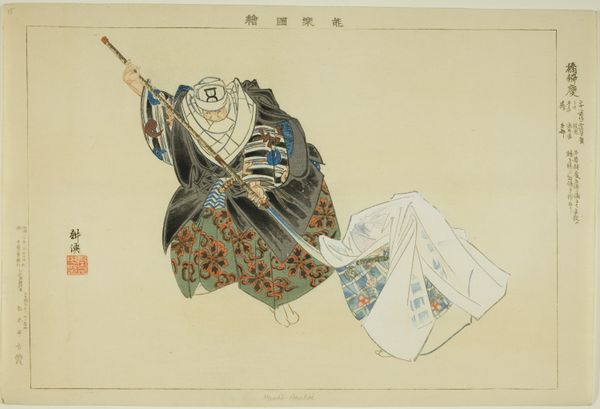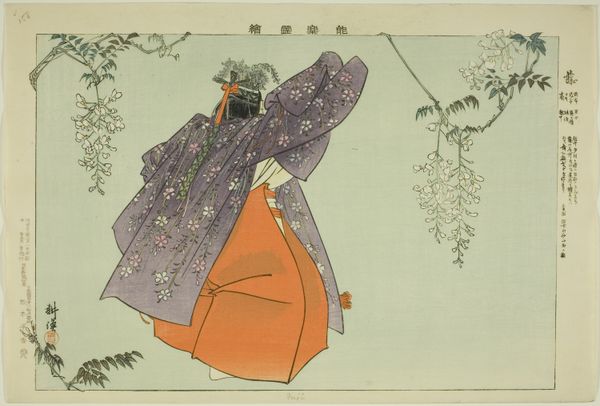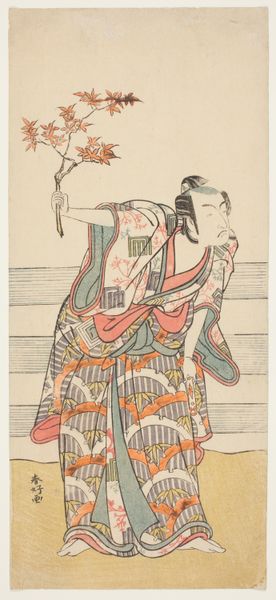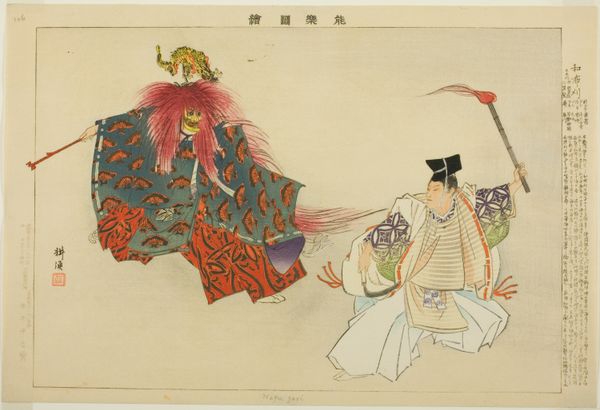
Sora Zutsumi, from the series "Pictures of No Performances (Nogaku Zue)" 1898
0:00
0:00
Dimensions: Approx. 25.2 × 37.4 cm (10 × 14 4/3 in.)
Copyright: Public Domain
Curator: This is a really striking print; I’m immediately drawn to the figures’ serene expressions. Editor: Right? I feel a sense of stillness looking at this, almost meditative. The use of negative space really amplifies that, too. The decorative geometric shapes give the impression of suspended motion that also conveys something deeply still and resonant. Curator: It’s entitled *Sora Zutsumi, from the series “Pictures of No Performances (Nogaku Zue)”*, dating back to 1898, by Tsukioka Kôgyo. The artist masterfully uses watercolor on paper, offering us a peek into the world of Noh theatre. Currently, you can find this work hanging at The Art Institute of Chicago. Editor: The noh tradition is fascinating in itself, having emerged around the fourteenth century. It gives primacy to communal engagement, storytelling, shared symbolic and ethical practices; Kogyo really captures some of the qualities associated with noh, although they chose to present ‘no performances’ – that’s quite daring. How does one capture absence? Curator: Absence certainly seems to play a major role, even a spiritual one. The musician’s posture, with hands covering their face… it makes you wonder what unspoken emotions are at play, both on stage and off. I can’t help wondering if the drum signifies a longing, perhaps, or a forgotten rhythm of the past? I would also be interested to learn more about how the visual techniques on display related to the original experience of seeing Noh performances at that time. Editor: Considering its history, too—the way Noh became entrenched as a primarily aristocratic and then increasingly bourgeois tradition by the 19th century—this makes me wonder what accessibility looked like for working class populations? Does ‘absence’ mean their experiences were purposefully excluded from this world of performance? Perhaps this is what the print wants us to think about: absence from culture. The arrangement makes me think there may be alternative viewing methods we are not being encouraged to imagine. Curator: You always bring such valuable insights! I never quite considered it that way, though there certainly would have been different ways in which culture affected social hierarchies, particularly within a feudal society. I'd wager those themes likely preoccupied the minds of a lot of contemporary viewers, too. Editor: Absolutely. That potential interplay between absence and artistic visibility strikes me as incredibly complex, and that's partially what makes this such a remarkable print. I see a potent dialogue unfolding, historically and politically.
Comments
No comments
Be the first to comment and join the conversation on the ultimate creative platform.

